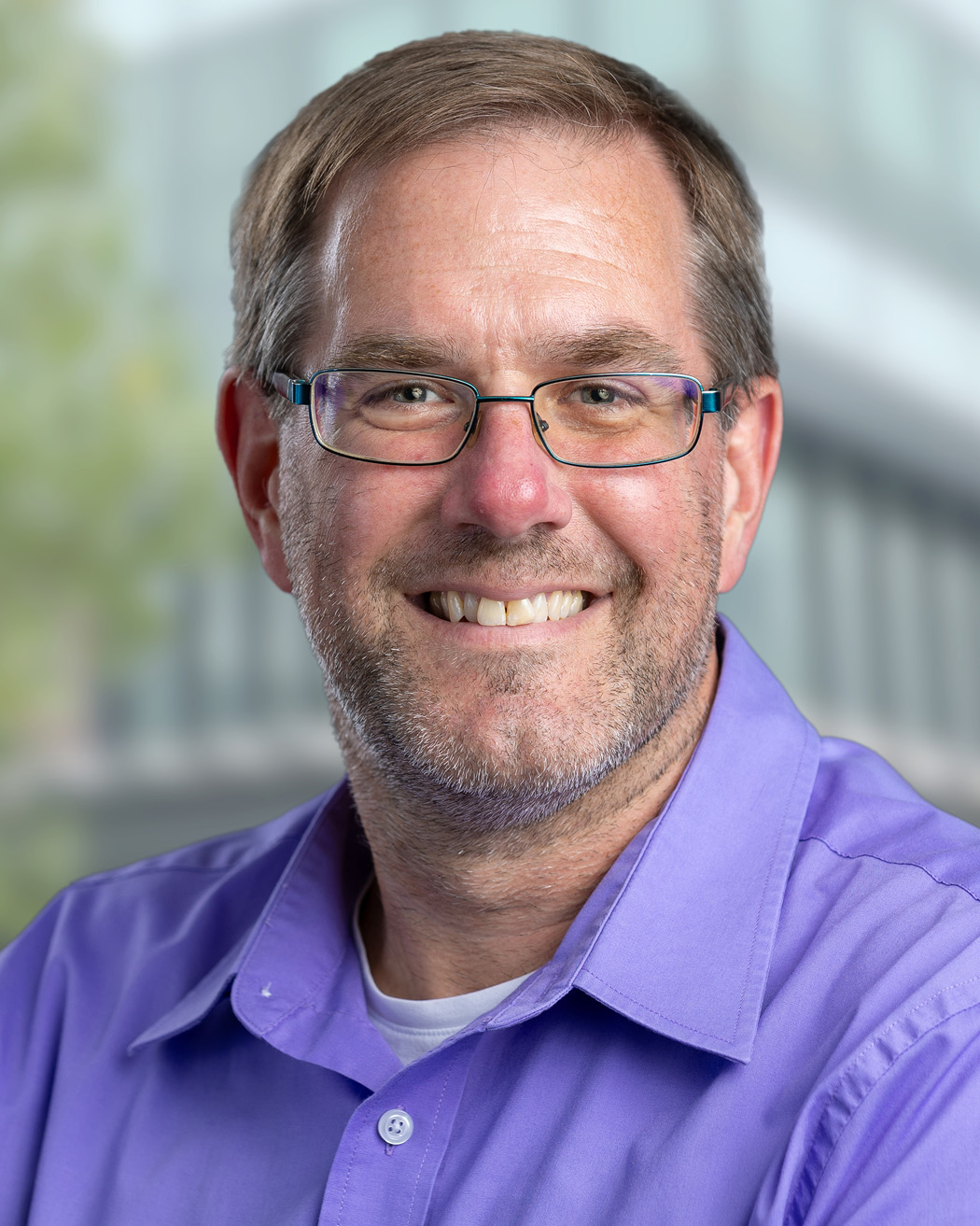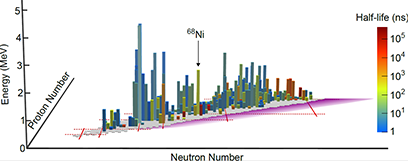
Professor of Chemistry
Joined the laboratory in 2009
Education and training
- BS, Chemistry, Texas A&M University, 2001
- PhD, Chemical Physics, Michigan State University, 2004
Research focus
- Nuclear chemistry
Contact information
Links
Research
The research carried out in my group addresses two critical questions in low-energy nuclear science: (1) how do we achieve a comprehensive and predictive model of the atomic nucleus and (2) how are elements made in during the explosive end of a massive star? To address the first goal, one focus of the group is to study long-lived excited nuclear states called isomers. The ease of the transition between the excited isomeric state and a lower-energy nuclear state carries a wealth of information used to infer the basic configuration of the nucleus’ constituent protons and neutrons. The group focuses on specific isomeric states and transitions between states with a spin and parity of 0+.
The second goal of the group centers on providing nuclear properties to inform our understanding of the synthesis of heavy elements in energetic astrophysical events. Using indirect techniques, the group infers constraints on the energy-dependent probability of emitting photons from highly excited nuclear states and the number of states present at a specific excitation energy. We combine the two properties to calculate neutron-capture cross sections, which then inform predictions of how heavy elements are made. The group addresses both experimental goals by studying the beta decay of rare isotopes and the delayed radiation that is emitted following beta decay.

Biography
I started work in the field of nuclear science as an undergraduate researcher in the chemistry department at Texas A&M University. Following three years of undergraduate research and a successful undergraduate thesis, I moved to MSU for graduate school. At MSU I discovered my first never-before seen isotope and completed my PhD in 2004. I continued with postdoctoral research after graduation at Oak Ridge National Laboratory, the University of Tennessee, Knoxville, and Lawrence Livermore National Laboratory (LLNL) before coming back to MSU at the end of 2009. Since returning to MSU my research group has explored nuclear structure and nuclear astrophysics and has begun to investigate the application of machine learning to data analysis.
How students can contribute as part of my research team
As part of the group, students will participate in a compelling science program aligned with national priorities. Students will work with state-of-the-art scientific instrumentation at FRIB and participate in all aspects of the experiment program. Students are involved in setting up experimental equipment, running devices to obtain experimental data, performing data analysis, and publishing their results. Students would also help develop new experimental equipment and analysis techniques to be used at FRIB. Students will also be able to work with a variety of scientific staff at national laboratory partners throughout their graduate career and could even spend time working at a national laboratory for brief periods, if interested. Students are expected to travel to conferences both international and domestic to present their research to a broad audience.
Scientific publications
- Shape coexistence in neutron-rich nuclei, A. Gade, S.N. Liddick, J. Phys. (London) 2016 G43, 024001.
- Benchmarking the extraction of statistical neutron capture cross sections on short-lived nuclei for applications using the β-Oslo method, S.N. Liddick, A.C. Larsen, M. Guttormsen, A. Spyrou, B.P. Crider, F. Naqvi, J.E. Midtbo, F.L. Bello Garrote, D.L. Bleuel, L. Crespo Campo, A. Couture, A.C. Dombos, F. Giacoppo, A. Gorgen, K. Hadynska-Klek, T.W. Hagen, V.W. Ingeberg, B.V. Kheswa, R. Lewis, S. Mosby, G. Perdikakis, C.J. Prokop, S.J. Quinn, T. Renstrom, S.J. Rose, E. Sahin, S. Siem, G.M. Tveten, M. Wiedeking, F. Zeiser, Phys.Rev. C 100, 024624 (2019).

